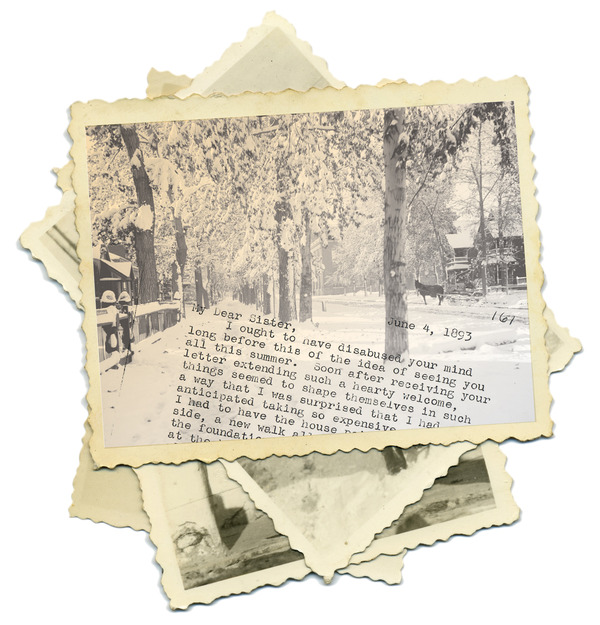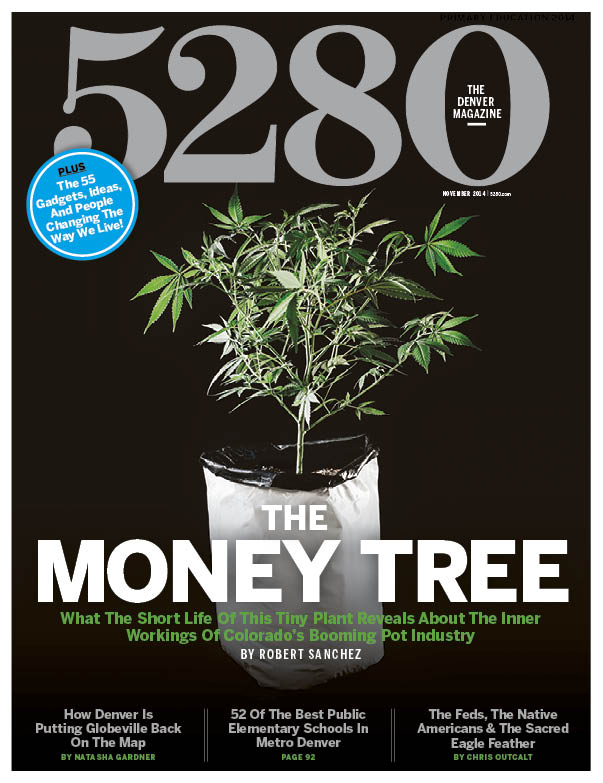The Local newsletter is your free, daily guide to life in Colorado. For locals, by locals.
In 1889, 47-year-old Catharine “Kate” Yeiter bustled around her two-story home in northwest Denver’s Whittier neighborhood, washing, sewing, cleaning…and boiling a batch of cookies like taffy. I have to learn to bake nicely in this climate, she wrote, exasperated, in a letter to her sister Libbie in Michigan. The recipes we used in Illinois and Indiana won’t do at all here in this mile high Denver.
My great-great-great-grandmother had moved to Denver just a few months earlier following instructions from doctors in Illinois, who believed the state’s dry air could cure her husband, Austin Crabbs, of his respiratory problems. Sadly, after just eight days in Denver, Austin died of complications from malaria, leaving Kate alone to raise the four youngest of her eight children in a new city. I must not look backward but go forward as he would have me do, she wrote.
A recent transplant myself, one of more than 30,000 people who have moved to Denver in the past five years, I discovered my family’s connection to the Mile High City after only two months in Colorado. My mother and grandmother found the collection of yellowed letters hidden among stacks of old photographs in my native Michigan. In an effort to help me forge a stronger bond with my new city, my mom scanned the letters and sent them to me. I raced through the stack, delighted to discover, amid the lines of neatly typed text, my own personal tour guide.
Although she was busy with housework much of the time, Kate followed through on her missive to explore her surroundings. And I followed her, retracing her steps according to her letters. I am going to try this year to take the Chautauqua Course, she wrote. I feel so uncultured and ignorant and I need so much to study something besides sewing, cooking, and housekeeping. The Chautauqua Literary and Scientific Circle was a long-distance book club—founded in New York—that allowed those unable to go to college to learn about literature, science, and art from anywhere in the country. I wasn’t sure if Kate ever visited the site of Boulder’s Chautauqua, but I went anyway, slowly snaking my way along Highway 36’s traffic cones and construction work. Climbing the switchbacks of the Flatiron Trail, I wondered where Kate might have stopped, smoothing out a blanket and the pages of her latest book on the rugged, pine-spiked hills.
A few days later, while admiring the claw-foot tub in my Curtis Park home, it occurred to me that if my 19th-century house had lasted all these years, maybe hers had, too. I rummaged through the first letters and found her cross streets. Marion Street and 30th Avenue—less than a mile from where I live. Raindrops hit the windshield as I drove the three minutes to the brown and cream, bay-and-gable house Kate had called home more than a century ago. I rang the doorbell. No one answered. I waited a few minutes, then turned back to my car, unfulfilled but determined. Over the next few weeks, I searched for more clues to Kate and her Denver; the right combinations of search terms in Google finally revealed she and Austin were buried in Riverside Cemetery, the oldest functioning graveyard in Denver.
I spent an hour circling the 77-acre cemetery before a volunteer found me—and then found their records in less than a minute. He directed me to plot number three near the center of the site, close to several territorial governors. I parked and slowly walked up to the chest-high, two-tone marble block with “CRABBS” stamped across its face. In front of the monument, two smaller cubes read “Father” and “Mother” in Gothic script. I stared at my great-great-great-grandparents’ grave, wondering at the journey that had landed me here. After a few minutes, I turned to leave, then paused and bent closer. On top of the block, lighter inscriptions bore Austin and Kate’s first names and birthdates and a nod to Austin’s service as a captain in the Army. Weather and time had worn these footnotes, these whispers of the past, almost completely away. I only noticed them because I stopped to look behind me.









